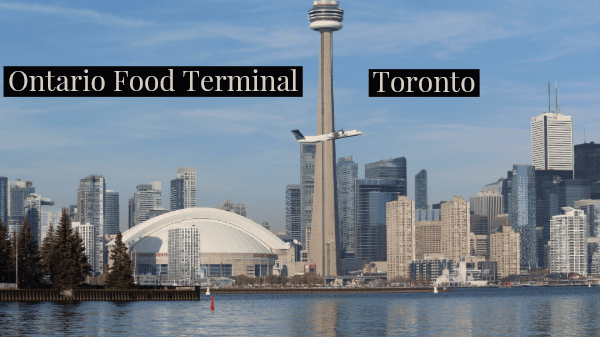
Despite the growth of independent distribution centers run by the big grocery chains, Lindsey Day Farnsworth, PhD, is a postdoctoral fellow at the Center for Integrated Agricultural Systems at the University of Wisconsin-Madison still believes in the viability of the terminal market model.
“Many of the terminal markets were built following legislation in the early half of the last century. Terminal markets of the twenty-first century will likely look different because of changes in logistics and food safety, which favor enclosed docks and different dock and storage dimensions.”
Globally, terminals are also valued for their role in building resilient food systems because they increase market access for small and independent growers and promote competition on price and quality.
But what many do not realize is that terminals also help address the question of efficiently managing food freight, congestion, and distribution to buyers within large urban areas.
“There are many benefits to terminals that might not be immediately obvious, including alleviating the congestion in urban areas that comes from food freight,” Farnsworth said.
“Ideally, the 53-foot trucks are mostly just on the interstate, and then when you’re in the inner cities you are using smaller trucks. Europe is ahead of us on this, in part because of its narrow, winding city streets.”
In addition, because well-designed markets like the Ontario Food Terminal allow buyers to load product from local growers and big importers and wholesalers from a centralized location, it helps buyers coordinate the delivery side more efficiently.
Such efficiency is important on multiple levels, including cost, time, and environmental concerns. The latter two are obvious—one-stop shopping can help buyers reduce their carbon footprint. The first, cost, is not just from competitive pricing but also relates to volume and exchange rates.
“The exchange rate has always had an impact,” said Julian Sarraino, chief operating officer of Fresh Taste Produce Limited Canada, BB #:166464, “and affects the velocity of sales at the retail level.”
Farnsworth also has her eye on broader logistical issues.
“Local food is important, and I’m all for it when it comes to education and feeling connected to the Earth, but we’re missing the mark if the emphasis is on local to the detriment of economies of scale.”
She cites a recent study from the University of Minnesota, funded by the USDA, which found “fuel use per unit of product in local chains can be greater than in the corresponding mainstream chains. In these cases, greater fuel efficiency per unit of product is achieved with larger loads and logistical efficiencies that outweigh longer distances”—meaning, Farnsworth explains, “it can be much more efficient to transport regionally sourced food in large fully-loaded trucks than to move local food in less efficiently loaded and smaller vehicles.”
Despite the growth of independent distribution centers run by the big grocery chains, Lindsey Day Farnsworth, PhD, is a postdoctoral fellow at the Center for Integrated Agricultural Systems at the University of Wisconsin-Madison still believes in the viability of the terminal market model.
“Many of the terminal markets were built following legislation in the early half of the last century. Terminal markets of the twenty-first century will likely look different because of changes in logistics and food safety, which favor enclosed docks and different dock and storage dimensions.”
Globally, terminals are also valued for their role in building resilient food systems because they increase market access for small and independent growers and promote competition on price and quality.
But what many do not realize is that terminals also help address the question of efficiently managing food freight, congestion, and distribution to buyers within large urban areas.
“There are many benefits to terminals that might not be immediately obvious, including alleviating the congestion in urban areas that comes from food freight,” Farnsworth said.
“Ideally, the 53-foot trucks are mostly just on the interstate, and then when you’re in the inner cities you are using smaller trucks. Europe is ahead of us on this, in part because of its narrow, winding city streets.”
In addition, because well-designed markets like the Ontario Food Terminal allow buyers to load product from local growers and big importers and wholesalers from a centralized location, it helps buyers coordinate the delivery side more efficiently.
Such efficiency is important on multiple levels, including cost, time, and environmental concerns. The latter two are obvious—one-stop shopping can help buyers reduce their carbon footprint. The first, cost, is not just from competitive pricing but also relates to volume and exchange rates.
“The exchange rate has always had an impact,” said Julian Sarraino, chief operating officer of Fresh Taste Produce Limited Canada, BB #:166464, “and affects the velocity of sales at the retail level.”
Farnsworth also has her eye on broader logistical issues.
“Local food is important, and I’m all for it when it comes to education and feeling connected to the Earth, but we’re missing the mark if the emphasis is on local to the detriment of economies of scale.”
She cites a recent study from the University of Minnesota, funded by the USDA, which found “fuel use per unit of product in local chains can be greater than in the corresponding mainstream chains. In these cases, greater fuel efficiency per unit of product is achieved with larger loads and logistical efficiencies that outweigh longer distances”—meaning, Farnsworth explains, “it can be much more efficient to transport regionally sourced food in large fully-loaded trucks than to move local food in less efficiently loaded and smaller vehicles.”



